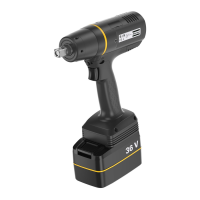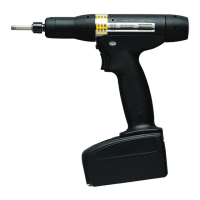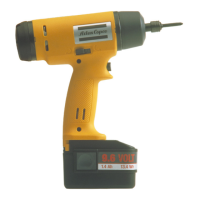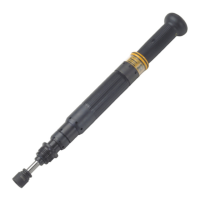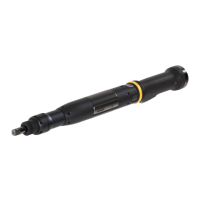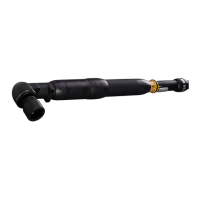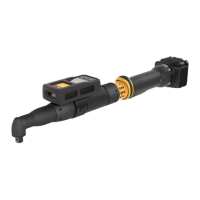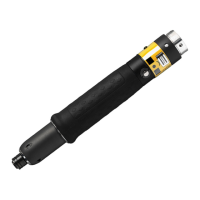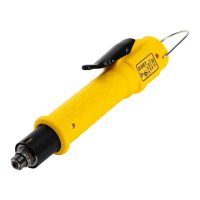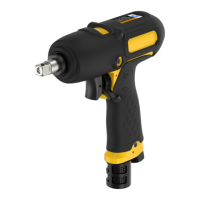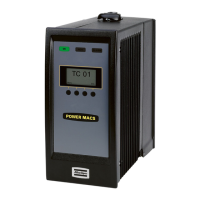ETP TBP81-55-10 EN Operation
© Atlas Copco Industrial Technique AB - 9839 0853 01
13
The table below provides an overview of the standard flash patterns.
LED indicator Light behavior Status
All indicators All flashing Tool has started.
Battery level All flashing white: high frequency
flashes
Tool is running on the backup bat-
tery.
Battery level One flashing red Battery is empty.
Alarm Flashing: one flash per second Invalid configuration of tool WLAN
settings in ToolsTalk Service 2.
Alarm Flashing: high frequency flashes Battery software outdated. It is not
allowed to operate the tool with bat-
teries running outdated software.
Radio connection Blue Radio connection established /
ToolsTalk Service 2 connection es-
tablished.
Radio connection Flashing Start request not received in time
by the tool, due to bad connection.
Tightening direction Both directions flashing: high fre-
quency flashing, 3/s.
Software update is ongoing (takes
up to 7 minutes).
Tightening direction Both directions flashing: high fre-
quency flashes followed by steady
light.
Indicates one of the following:
■
Invalid data on SD-card
■
Error during tool software up-
date
■
SD card is missing
Tightening direction Both direction flashing: low fre-
quency, 1/s.
Tool is connected via USB cable
and is waiting for ToolsTalk Service
2 to connect.
Optimizing the Performance of your Pulse Tool
Recommended Number of Pulses
A Pulse tool well suited for your application should reach the target torque (with shut off) within 5-20
pulses. The number of pulses it takes for the tool to reach target torque can be measured with an ana-
lyzer. The tightening time can also be used a guide to know if the tool is appropriate for your application:
■
≤1 second for tools up to 30Nm
■
≈1 second for tools up to 80Nm
■
≈2 seconds for tools up to 150Nm
■
≈5 seconds for tools up to 450Nm
■
≤10 seconds for tools up to 850Nm
If the target torque is achieved with less than 5 pulses (= short tightening time), the torque scatter will in-
crease and it can be difficult to adjust to the right level, especially on hard joints.
If the target torque is achieved with more than 20 pulses (= too long tightening time) the wear will in-
crease and more frequent oil filling and service will be required. Too long tightening time, in combination
with high production rate, may also result in excessive heating of the oil. In that case the power will de-
crease with longer tightening time and sometimes no shut off.
If the target torque is achieved with less than 5 pulses this can be fixed by:
■
Lowering the power setting during tightening.
■
Reducing the rundown speed.
Changes of power settings and/or rundown speed may affect the torque accuracy.
If the target torque is achieved with more than 20 pulses this can be fixed by:
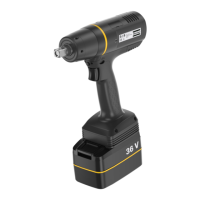
